In 1887, a Maori chief and an English surveyor on New Zealand’s North Island rode a handmade raft through a cave entrance where a local stream disappeared into the darkness. Locals called the place Waitomo, or “where the water flows into the ground.” At the time, what lay beyond was unknown.
Once in the Waitomo cave, Fred Mace and Tane Tinorau looked up from their candles and were dazzled by the thousands of tiny blue lights coating the rock surfaces, giving the ceiling the appearance of a natural planetarium.
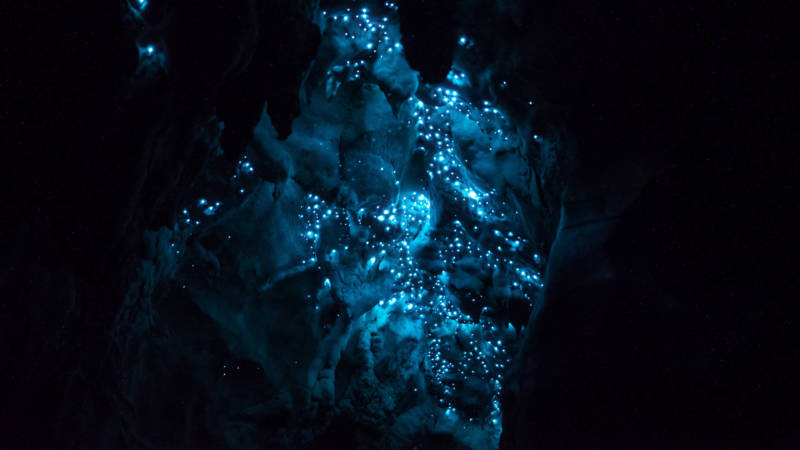
But what looked like galaxies overhead to these first explorers at Waitomo were colonies of glow worms, the larval stage of a flying gnat species that has earned the name Arachnocampa luminosa (“glowing spider-worm”) for its combination of awe-inspiring bioluminescence and clever — if grisly — predatory habits.
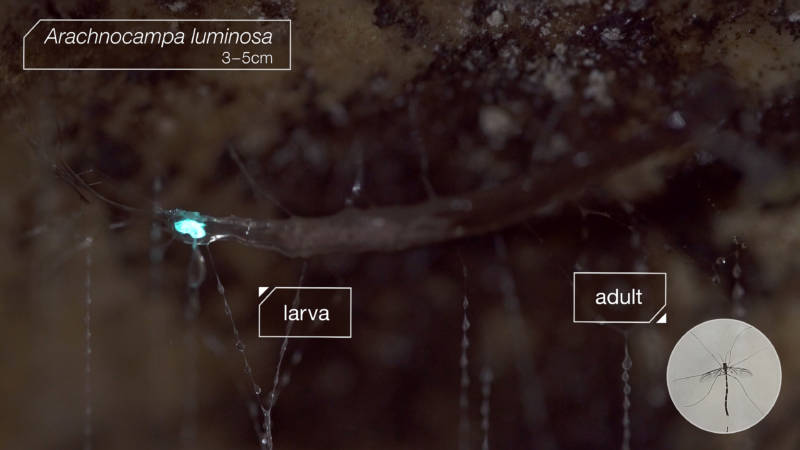
Like fireflies, Waitomo’s worms glow by breaking down a light-emitting protein. But unlike the characteristic yellow flashes from fireflies, which attract mates, the glow worm’s steady blue light has a more insidious purpose: it’s bait.
The glow worms’ victims are flying insects that inhabit the caves, sometimes hatching from eggs at the stream’s surface and sometimes drifting in from the outside world by air or water.
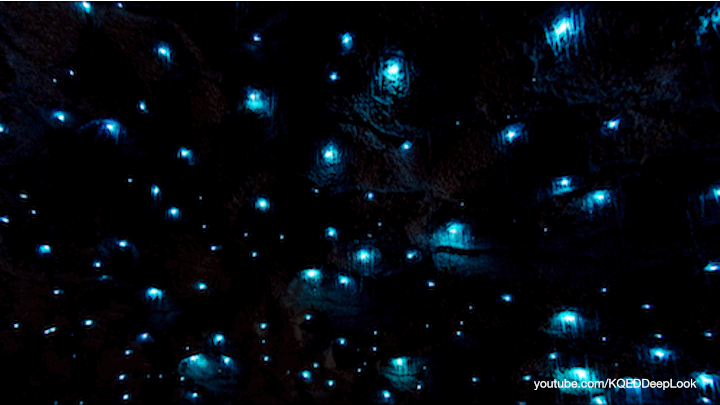
The strategy is simple. Many of these insects, including moths, navigate by starlight. They keep the celestial bodies at a constant angle to fly in a straight line. “That works fine when the moon and stars are real,” said Dave Merritt, a biologist at the University of Queensland in Brisbane, Australia, “but when the source is close they end up spiraling into it.”
Bioluminescence serves many purposes in nature, but using light to attract prey is relatively rare, especially on land. The Waitomo glow worm species is endemic to New Zealand, occurring in a number of limestone cave systems throughout the country. Related species occupy similar habitats in Tasmania and on Australia’s east coast.
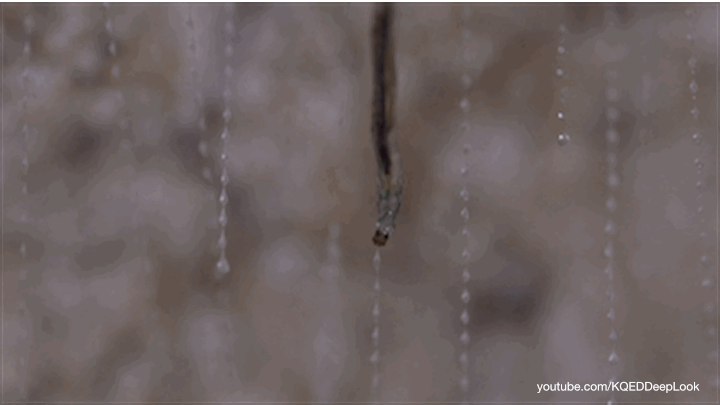
With their glowing lures in place, the worms drop threadlike snares, thin filaments of silk secreted from their mouths and dotted with balls of mucous, to trap confused flyers. Besides being extra-sticky, those mucous balls lend the strands the appearance of mardi gras beads, which magnify the worms’ spectral light like chandeliers.
Wind can tangle the sticky strings, so the deeper you go into the cave, the longer the threads.
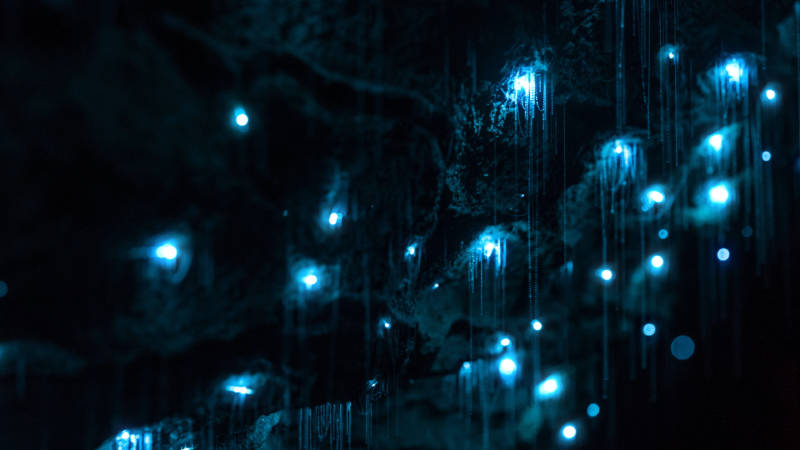
When potential prey touches a snare, the worm hangs back while its next meal struggles, becoming entangled in the gooey threads. Scientists who’ve analyzed the mucous haven’t found any toxins in it, but suspect it may clog the breathing holes of insects fighting to get free.
Once the victim grows still, it’s time to reel in the catch. The worm hangs out of its hammock and pulls up the thread the same way it went down: through its mouth. Those mucous balls also absorb water from the damp air in the cave. The worm is hydrating with every glob it swallows.
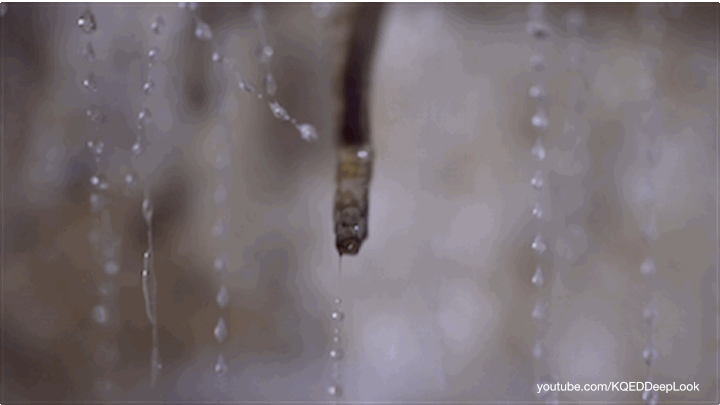
The prey is typically still alive when it arrives at the glow worm’s mouth, which has teeth sharp enough to bore through insect exoskeletons. A single catch may serve up several meals before it’s cut loose from the threads.
Glow worms can live a year in this glowing larval stage — a long time compared to the adults, which perish within a week of emerging. The adults retain some bioluminescence, but seem to exist for just one purpose: to mate. Based on their anatomy — they lack mouths — it’s doubtful they even eat in their short lifespan.

The big question for scientists now is what makes the worms’ lights turn on and off.
There can be several colonies of glow worms in a cave, though usually a dominant one occupies the best hunting spot. Some researchers have noticed that the glow worms seem to sync their lights to the other glow worms in their colony, brightening and dimming on a 24-hour cycle. Larger worms remain brighter for more of the cycle than do smaller ones.
Studies also have shown that different colonies are on different cycles. The colonies seem to be taking turns at peak illumination, when they’re most attractive to prey, possibly as a result of their position in the cave relative to those food sources.
“They’re reacting to local conditions,” said Merritt, “The cave structure is complex.”
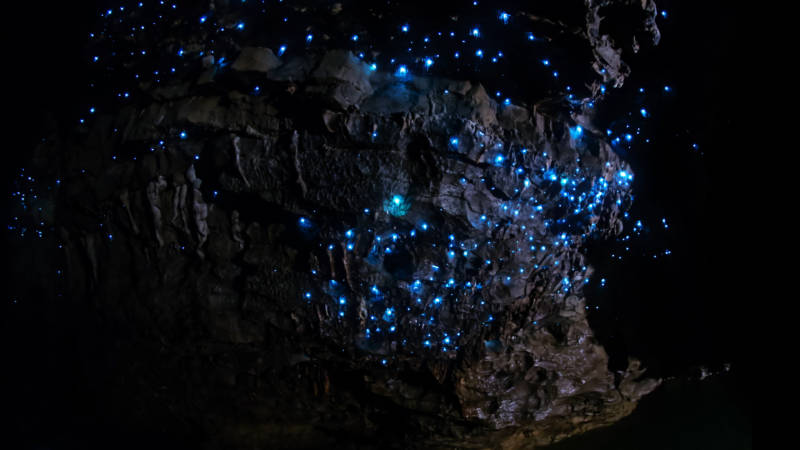
If conditions are good, a colony near the cave mouth can expand into the vegetation beyond, but even as flying adults most of the glow worms will never see the outside world, including that night sky they so closely resemble.
“They can’t move far from where they were deposited as eggs,” said Merritt, “so larva that hatches deep in the cave would never see the light of day.”
Not surprisingly, the worms glow brighter when they’re hungry.